In Windows 10 operating system, startup apps are programs that can run automatically after the system has booted up. Some examples of startup apps are Steam gaming client, Java Update Scheduler, etc. Icons of startup apps can be oftentimes found in the system tray on the taskbar in the lower right corner of the screen.
Common startup apps usually consume very small amounts of computing resources and laptops’ battery juice. But, disabling them can be helpful on very weak computers where every bit of computing power is valuable. Also, disabling startup apps can make Windows 10 boot-ups quicker.
There are multiple ways to disable startup apps on laptops and other computers with Windows 10. Here’s how.
Disable Startup Apps in Windows Settings
The first way is to go to Settings / Apps / Startup. To get there, click on the Windows Start button in the extreme lower left corner of the screen, click on the Settings (gear) icon, click on Apps item on the window that will show up, and then click on the Startup item on the left sidebar of the window.
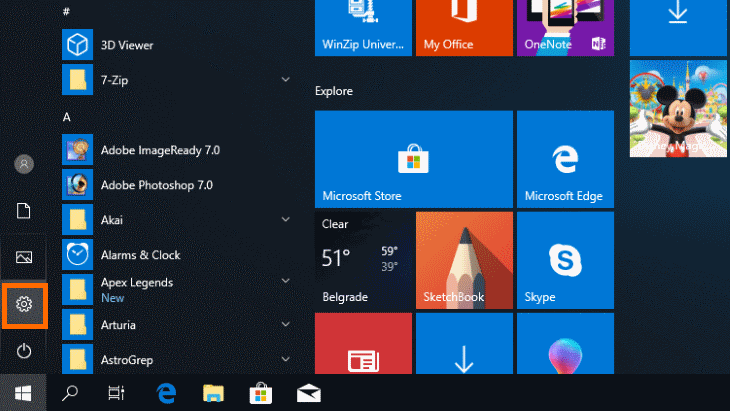
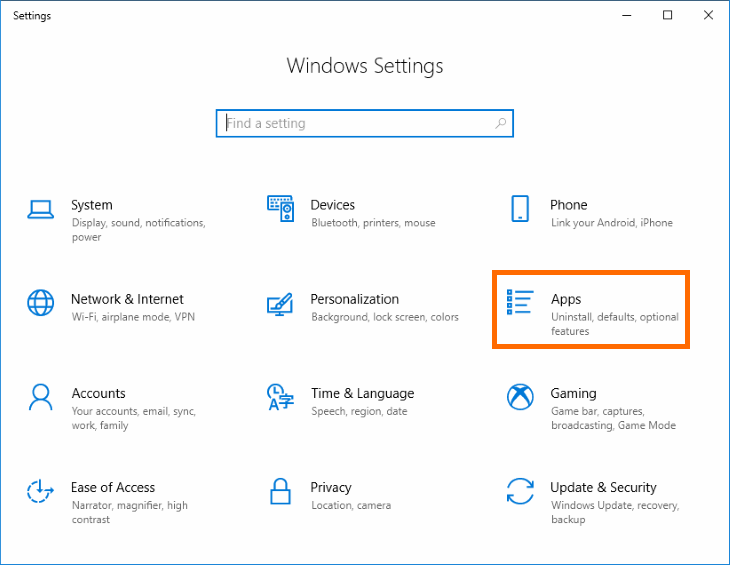
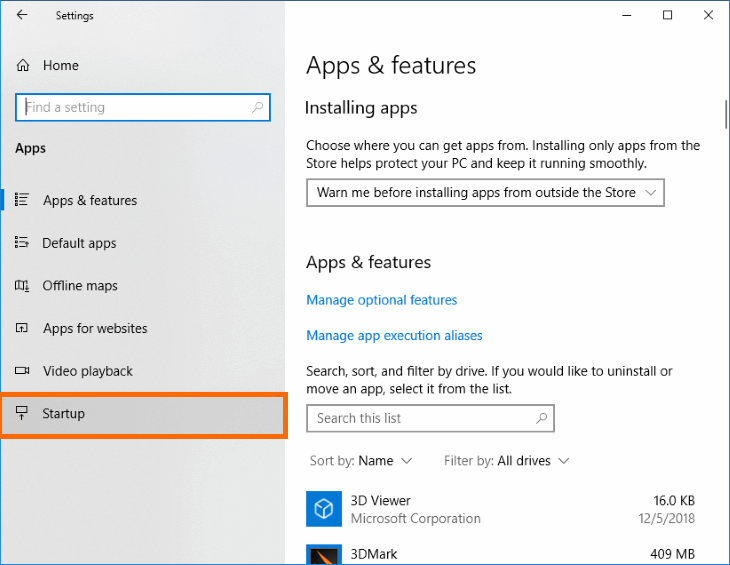
Note: To open the Settings window, you can also press Windows key + I key on the keyboard.
You can also get to the Startup section by typing startup in the Windows search box and clicking on the Startup Apps item that will show up in the search results.

Here’s what the Startup window looks like:
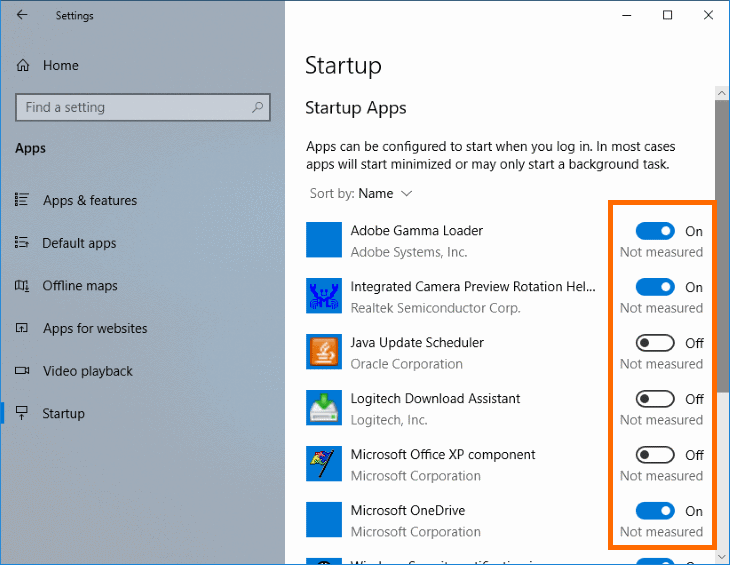
To turn unwanted startup apps off, toggle the on / off switches near the apps’ names.
Disable Startup Apps in Windows Task Manager
You can also disable startup apps via Windows Task Manager. To do so, right-click on the Windows Start button in the lower left corner of the screen and click on the Task Manager item on the menu that will pop up.
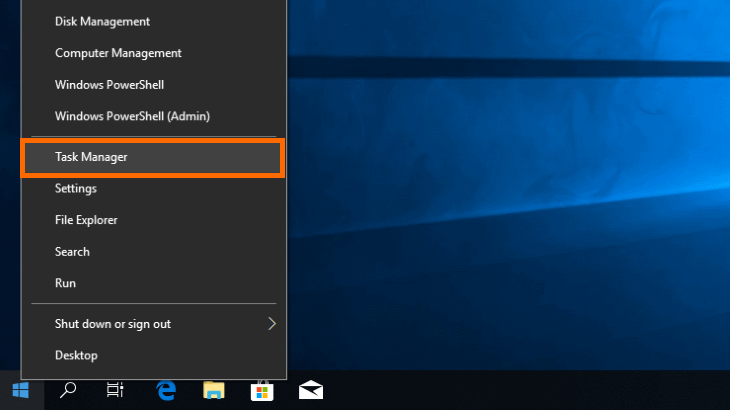
Note: You can also get to the Task Manager by using CTRL + Shift + Esc combination on the keyboard.
Once you are in the Task Manager, go to its Startup tab. To disable a startup app, right-click on it and click Disable on the menu that will show up.
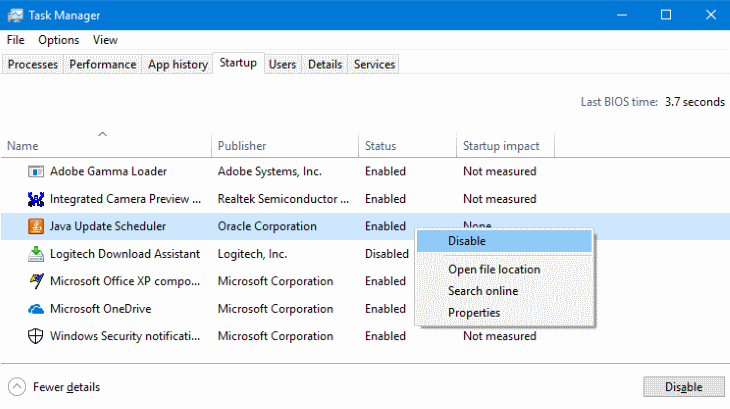
Disable Startup Apps From Within Apps
Depending on the application, you can prevent it from starting together with Windows by using settings within the app itself. For instance, to prevent Steam game client from starting at the system startup, go to Settings within the Steam program, then go to the Interface section and uncheck the “Run Steam when my computer starts” box.
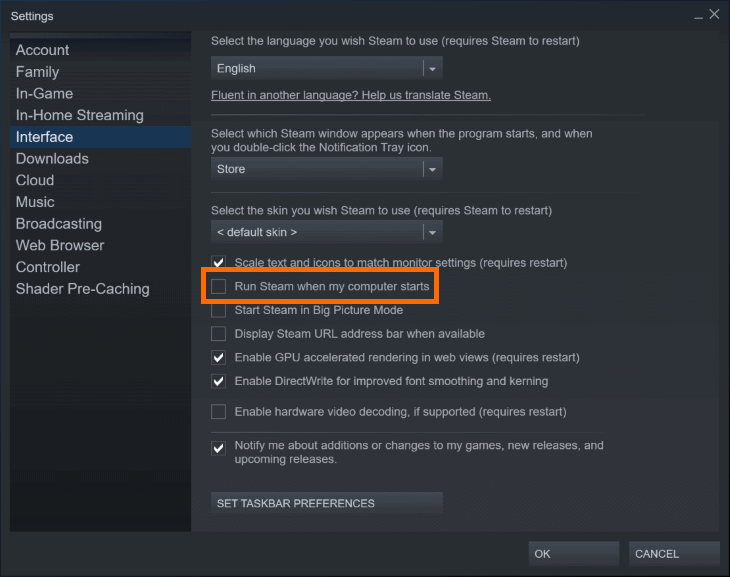
That’s how you can disable startup apps in Windows 10.
Similar to startup apps, background apps in Windows 10 also run automatically after the system has booted up. The main difference between them is that startup apps are traditional Windows programs, also commonly called desktop programs. On the other side, Windows 10 background apps are modern-type apps that come pre-installed with Windows 10 or are available on Windows’ Microsoft Store.
Another type of applications that can run automatically after Windows has booted up are Services. They mostly manage Windows functionalities such as networking, printing and security, but there are also services used by third party apps. Managing and disabling Windows Services isn’t recommended if you aren’t an advanced Windows user. That’s because the most of these services are needed for normal operation of Windows, programs, and hardware components. In addition to that, services are generally very light when it comes to computing load and disabling them doesn’t noticeably improve performance or battery life of modern laptops.

i am unable to change my microsoft basic display adapter with intel hd graphics. installation can not be completed and the message comes that my processor type is not supported.
now what should i do??
Hi, can you try this: Go to Device Manager > Display adapters > Basic display adapter, right-click on it, click on Update driver and then click Search automatically.